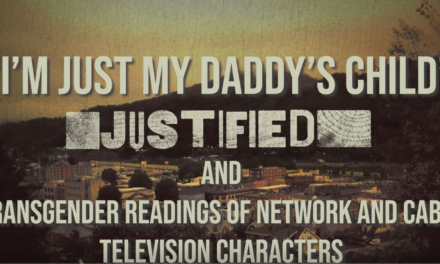As Halloween came and went, various images of costumes circulated on social media. One of my favourites showed a mini-Predator with the caption ‘Not every girl wants to be a princess.’ My first response was to laugh in recognition. My second was to think about the kind of princess I might have wanted to be. The ones who were around in popular media when I was young were Leia and Diana Prince. Later, Mononoke, Illyria (ok, Illyria was a GodKing or Old One, not a princess), Anya, Xena. Definitely Xena.

And I wondered again why Xena doesn’t seem to attract the attention it deserves.
Before Game of Thrones made high fantasy high profile on TV, before Supernatural got all metatextual, before Buffy became an iconic female action hero… there was Xena: Warrior Princess (1995-2001), a TV series that often seems before its time. Xena first aired twenty years ago (yes, I know, I’m a couple of months late) and, according to a recent article in The Hollywood Reporter, was distributed to 108 countries worldwide. ‘The drama was a cult favorite and ratings hit,’ the article notes, ‘ranking in the top five syndicated programs during each of its six seasons.’ News of a proposed NBC reboot continues to rumble on, igniting interest in the series as a flurry of similar reboots or returns gain publicity. Yet the possible return of Xena has not attracted the same level of attention as, for example, a new series of Twin Peaks, and while Xena arguably enjoyed significant success, had a lasting influence, and still has an enduring fanbase, it is not as visible in TV history and TV scholarship as other series. In her Salon article celebrating 10 years of Xena, Cathy Young suggests that ‘‘“Buffy” largely eclipsed “Xena” on the cultural landscape as the “girl power” show, garnering the critical analysis, the accolades for creative innovations that “Xena” did first (such as a musical episode) and, when it wrapped up, the grand farewell in the media‘. Young may sometimes overstate the case, but I have heard prominent academics lecture on gender in television without ever mentioning Xena.
Unlike Game of Thrones’ political machinations against a backdrop of war-torn kingdoms, Xena’s high fantasy was mixed with camp and performativity: its classical Gods talked like hipsters and its universe included beauty pageants (‘Here She Comes, Miss Amphipolis’ 2.11). As a result, it regularly incorporated similar tonal shifts to those found in Buffy the Vampire Slayer and Supernatural which also move between comedy, parody and emotional realism. The camp tone, however, does not seem to have done Xena any favours in the long run, much as it might have been noted, and praised at the time. ‘Too often,’ Young suggests, ‘ “Xena” got written off as campy swords-and-sorcery fare, a kids adventure show or a chicks-in-leather lesbian romp.’ Notably, the camp elements of the Buffy the Vampire Slayer movie (1992) were toned down in the TV series that followed, allowing it, despite its genre roots, to acquire the status of ‘quality’ television.
Xena revelled in the opportunities that fantasy television allows, with many episodes featuring doppelgangers and body swaps, as well as parallel timelines, a Groundhog Day episode (‘Been There, Done That’ 3.2), and flashforward episodes or ‘uber’ stories (such as ‘The Xena Scrolls’ 2.10 where an archaeologist in 1942 discovers the scrolls Gabrielle writes).

Both Xena and Gabrielle die more than once, most notably in ‘The Ides of March’ (4.21), often listed as one the series’ best episodes. The same techniques now associated with Tatiana Maslany’s outstanding performance as multiple clones in Canadian series Orphan Black were used in some of Xena’s doppelganger episodes—she had three ‘twins’, Meg, Leah and Diana [note]. Its six season run also included several musical episodes (‘The Bitter Suite’ 3.12 being the most commented on): musical episodes had appeared on TV before but Xena offered these up with its usual gusto, inflecting them, at times, with more panto than light opera.

Given its title—and its title character—Xena did attract some academic attention in terms of its representations of gender, just as it appealed to a large audience of women, and a strong lesbian fanbase. In the lead role, Lucy Lawless was convincing as a warrior princess. ‘Xena was not “strong but feminine”;’ observes Young, ‘she was unapologetically strong and unapologetically female, sexy and powerful, unafraid to get sweaty and dirty on the job, and all the more beautiful for it.’ Of course, the gender politics of the series were debated. One article by Elyce Rae Helford concludes that its ‘sexual politics rely on patriarchal myths of gendered identities and relations that belie the feminist and queer pleasures so many critics and fans applaud’ (2000). In contrast, Frances Early and Kathleen Kennedy’s edited collection Athena’s Daughters: Television’s New Women Warriors (2003) has a section devoted to Xena, with three chapters ‘interested in how the show reconstructs the founding myths of Western civilization as women’s stories’ (p7).
Certainly there had been flawed or ‘dark’ heroes before her, but Xena epitomises the villain-turned-hero story as she tries to find redemption by doing good, while still struggling with her tendency towards vengeance and violence. Given the one-dimensional nature of most female villains or leads on television, the facets of her character are remarkable. This transformation is supported, of course, by her relationship with Gabrielle, whose character also evolves as she travels with Xena. Xena has male and female companions, allies and enemies, but the series is perhaps still unusual for placing female bonds at its centre. Recent debates about the Bechdel test comment on how many highly praised series would not pass because even when women are not competing with or undermining each other, they rarely talk about something other than a man. In contrast, Gabrielle and Xena rarely talk about men and their relationship is shown to be highly significant to both their lives. An oft-quoted exchange from ‘The Dirty Half Dozen’ (3.3) encapsulates this:
Xena: I’ve got the answer to your question. Are you who you are or are you who I made you.
Gabrielle: And?
Xena: You’re Gabrielle—bard, Amazon Princess, best friend. Nobody made you who are, it was already there, Question is, who would I be without you?”

Of course, if they are lesbians in a romantic and sexual partnership then this subverts the Bechdel test in another way. However it is read, having Xena and Gabrielle as the two lead characters foregrounds the complexities of its female characters, whose gender is rarely commented on.
The fandom and the reception of the series, as well as its ongoing status (or lack of it) in television history is partly related to its cultural moment. It debuted just as the internet was changing how fans interacted, with each other and with the object of their fandom. Thus, some academic research and analysis has examined the series’ importance to lesbian or queer fans and their identity formation but, Mark Duffett’s recent Understanding Fandom (2013) merely name checks the show without more detailed comment.
For those who watched Xena: Warrior Princess, twenty years ago, or on its reruns, Lucy Lawless is indelibly associated with its title character. Other genre shows have exploited this association through what Jeffrey Bussolini calls ‘intertextuality of casting’, and Lawless has appeared in The X-Files, Battlestar Galactica, Spartacus, and Marvel’s Agents of S.H.I.E.L.D. among others, as well as the current Starz series Ash vs. Evil Dead. In at least one recent interview asking about her possible involvement with a reboot she states that ‘if they don’t honor the original, you know the covenant with the fans…. like if it’s full of T&A’ then she will not be signing on. Whether a new Xena series happens or not, the recent publicity means the series is being remembered—and talked about. I was once involved in an academic book proposal on Xena which wasn’t accepted by any of the publishers approached. Maybe now it’s time to try again.
Lorna Jowett is a Reader in Television Studies at the University of Northampton and coordinator of the Cult TV: TV Cultures Network. She is the co-author with Stacey Abbott of TV Horror: Investigating The Dark Side of the Small Screen (2013) and author of Sex and the Slayer: A Gender Studies Primer for the Buffy Fan (2005). She has published many articles on television, film and popular culture, and is currently working on a book about gender in the Doctor Who franchise.





